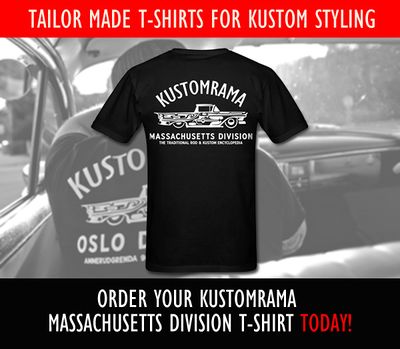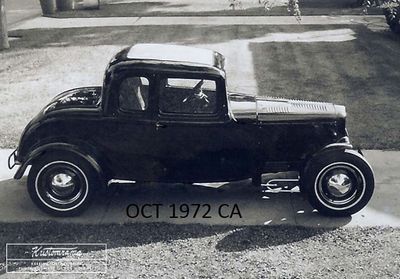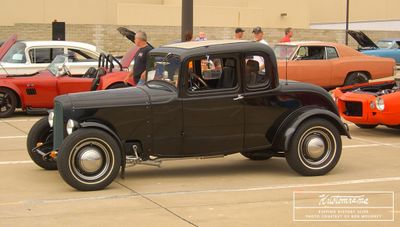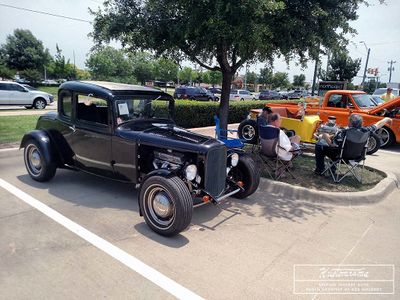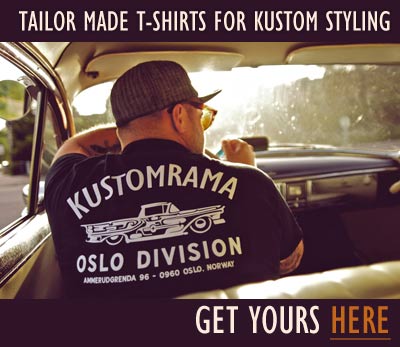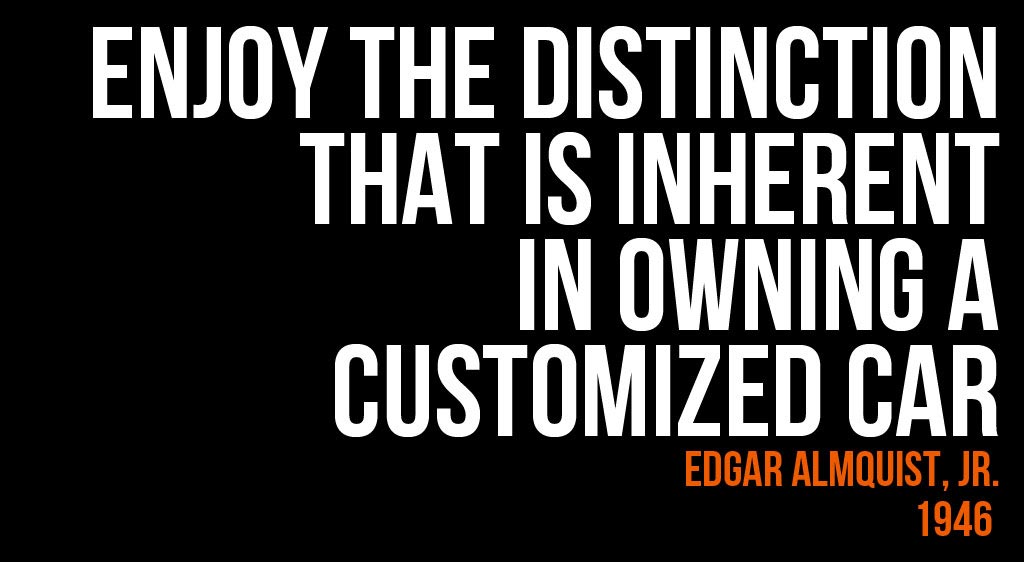Bob Moloney's 1932 Ford Five-Window Coupe
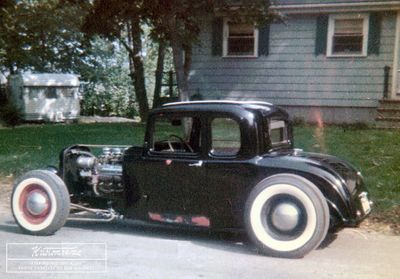
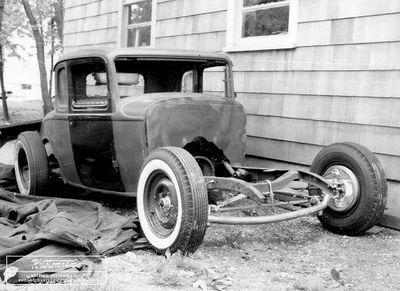

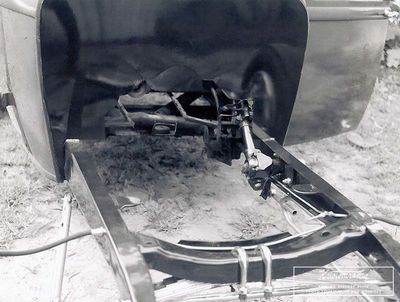
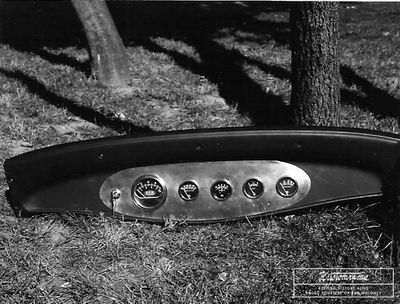
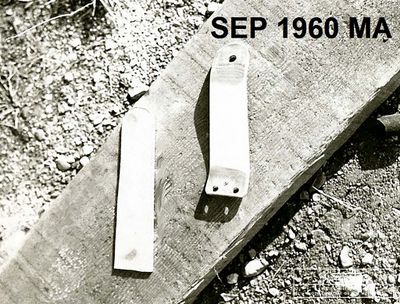
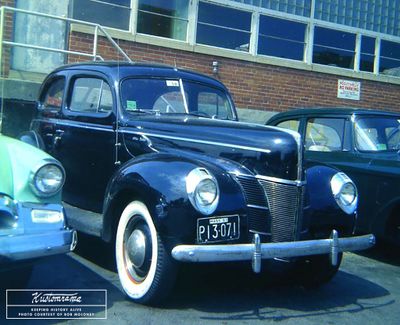
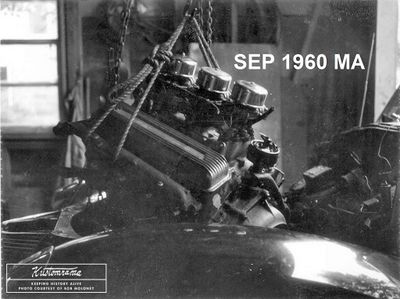
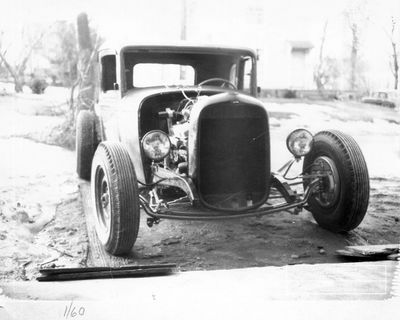

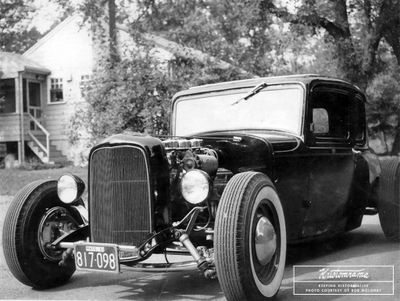
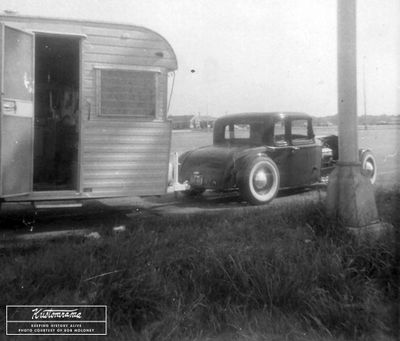
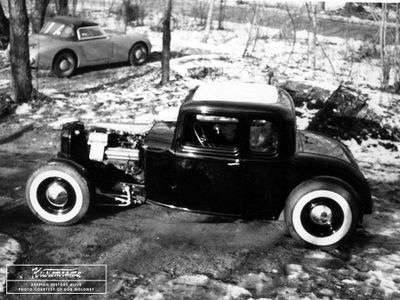
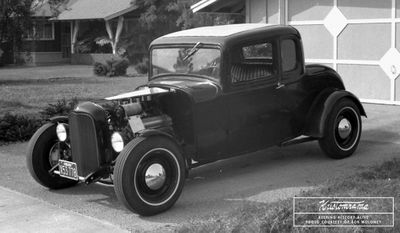
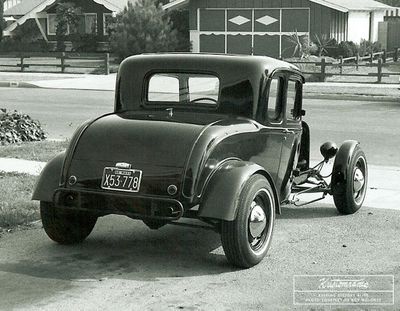

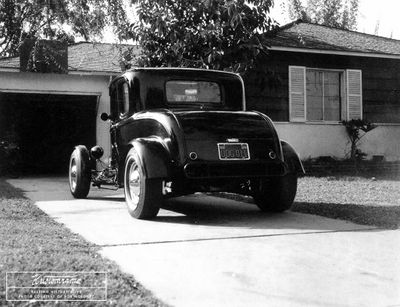
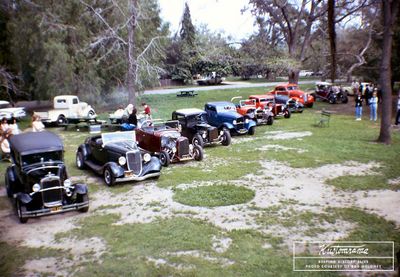
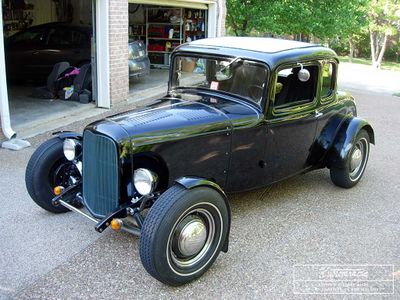
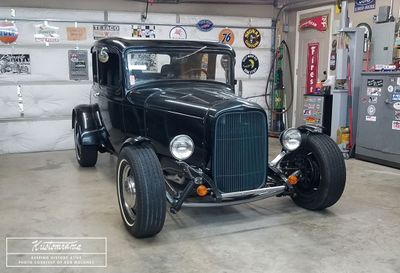

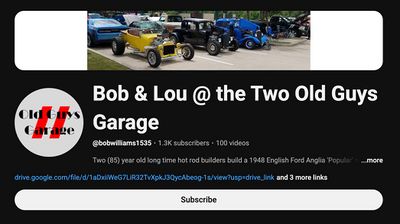
1932 Ford Five-Window Coupe owned and built by Bob Moloney of Keller, Texas. Bob’s Deuce is a historic East Coast hot rod that has been with him since 1960, when he and his fiancée bought the abandoned project for $425. First on the road in June of 1961, the coupe followed Bob through military service, cross-country moves, and decades of hot rodding. Over the years, it evolved with Corvette small-block power, a Jaguar XKE rear end, and countless homemade details, while never losing its identity. Continuously running and registered since 1965, Bob’s ’32 has been part of his life for more than six decades.
Contents
History
In the summer of 1955, in the Dorchester suburb of Boston, Massachusetts, a loosely knit group of young car enthusiasts gathered around old Fords from the 1930s and the 1940s. Among them was Bob Moloney, then working on a 1936 Ford Five-Window Coupe‚ upgrading it with hydraulic brakes and a 59AB flathead. In those fifties days, Bob was a member of the Roxbury Motor Marts, a car club of mostly Brighton High School attendees in its Automotive Vocational Course. "Our own 'gang' of car enthusiasts had a car club named the Dorchester Idlers," Bob told Sondre Kvipt of Kustomrama in 2025. "Space was limited here and soon someone located a more ideal set of garages to work on their cars. Most of the crowd migrated to the new location while two of us stayed behind." Bob's buddy, John Ryan, had taken it a step further, purchasing a 1932 Ford Model 18 Five-Window Coupe and embarking on a full hot rod project. "When John purchased the car, it was running, registered, inspected, and on the road as a stock vehicle."[1]
"In the fifties, there were two traditional methods of constructing a hot rod. The West Coast style kept the body up high with a raked or nose down attitude while the East Coast style took it to the ground with no rake." The coupe was torn down, and the body was lifted from the frame. Following the East Coast trend, the body was channeled about seven inches over the frame rails, which had been boxed and fitted with a tubular “K” member. "The rear frame rails were ‘Zd’ and the front cross member replaced with a ‘31 Ford Model unit," Bob told Kustomrama. The stock firewall was removed and replaced with a single piece of 12-gauge flat steel plate welded to the body and frame. The front suspension consisted of a Super Bell chromed 4" dropped tubular axle with 1948 Ford spindles, backing plates, brakes, and drums. The wishbones were split using hairpins custom fabricated from 3/4" thick wall tubing. A 1948 Ford steering box was reversed and rotated 90 degrees, welded to a plate, and connected to a 1940 Ford column topped with a 1956 Chevrolet Corvette steering wheel. A 1948 Ford rear end was shortened and adapted, and plans were made to run a 1957 Chevrolet Corvette small-block engine and a 1948 Lincoln side shifter transmission with overdrive.[1]
“Overnight the garages became a ghost town, and all work on the ‘32 project ceased.” By the late 1950s, most of the group had been drafted into military service, and the project was abandoned in 1957.[1]
Acquisition and Early Work (1960–1961)
In 1960, Bob and his fiancée attended a hill climb event at Belknap, New Hampshire. "An ugly small block Chevrolet powered custom car that resembled a dragster with a radiator recorded the fastest time. It turned corners at 5 MPH and rocketed the straights. Second place was an Austin Healy 100 with a mild small block Chevy V8 that made decent time in the turns and moderate on the straights. I felt that I could do it better."[1]
Not wanting to start from scratch, Bob tracked down the owner of the '32 and found that it was abandoned in the same garage, collecting dust and accruing past-due rent. "His offer to turn it over to me for back payment of garage rent at $425.00 was snapped up quickly." Expecting it to be 75% complete, Bob quickly realized it was closer to 20%. With permission to work at his future father-in-law’s property in East Weymouth, Massachusetts, Bob set up a temporary lean-to before moving the coupe into the main workshop.[1]
The frame was completed with steel brake lines, a 1948 Ford master cylinder, and a 1953 MG TD emergency brake handle. A 1955 Chevrolet Corvette small-block engine was removed from Bob's 1940 Ford Deluxe Tudor Sedan and installed in the coupe in September 1960. The firewall and frame were painted in black lacquer, and a gas tank from a 1958 MGA was installed along with taillights and a license tag light from a 1953 MG TD. Inside, DKW license plate lights were recessed into the stock ‘32 dash to provide indirect lighting to read the instruments. The inside of the lenses was coated with machine blue dye to tone the lights down and give it the English instrument look. A piece of sheet aluminum was cut into an oval shape and fitted with a SUN tachometer, four Stewart-Warner mechanical gauges, a 1957 Ford Thunderbird ignition switch, and switches and indicators to control the electronics. Early East Coast hot rodder Sebastian "Sabie" Rubbo had been a close friend of Bob since 1952, when he first met him at the age of 12 at Nantasket Beach in Hull, Massachusetss, and he was Bob's mentor during the build. According to Bob, Sabie knew many garage locations and buildings throughout New England where hot rods were built, and he visited them regularly, sharing his knowledge. "Sabie went to one of those many local places he visited and picked some aluminum metal out of their scrap pile for me, which became the dash oval center section," Bob recalled in 2025.[1]
Dietz headlights were mounted on handmade aluminum brackets to compensate for frame twist. "These were filed, sanded and polished. When completed and installed, both headlights aligned perfectly with their centers 24 ½ inches above the ground. An Aluminum bar strap was added under the brackets to the frame bottoms forming a triangle to eliminate headlight vibration." The grille shell was sectioned three inches, and a modified 1952 DeSoto radiator was adapted. In September 1960, the car was drivable under its own power.[1]
"In January 1961, my wife and I went to California, returning in late May 1961, taking about a month to finish the paint and putting it legally on the road for the first time since 1955." By June 1961, after 180 days of work, the coupe was licensed and legally on the road. Its first drives quickly revealed both problems and promise: “The ‘32 ran very smooth and stable. At a very high speed, I caught a whiff of burning rubber and shut down the speed run quickly.” The cycle fenders had cut grooves into the tires, forcing a redesign. By August 1961, the car was fully painted, with custom cycle fenders made from 1958 Ford Thunderbird and 1953 Nash Rambler spare tire covers.[1]
Military Life and Storage (1961–1965)
The car was stowed in September 1961 as Bob began his military service. In June 1962, he fabricated a trailer hitch and used the coupe to tow a 16-foot travel trailer all the way to Zion, Illinois. Along the way, the reversed rims failed and were welded back together by a local stock car racer. That September, Bob and his wife drove the coupe to Indianapolis for the National Championship Drag Races and Car Show. On the return trip, the driveshaft failed due to unhardened splines.[1]
In December 1962, with new orders taking them to Virginia Beach, the car was cocooned and stored through the winter. Returning to Massachusetts in June 1963, the coupe was placed in long-term storage in the back of the workshop until November 1965.[1]
Rebirth and California Move (1965–1966)
Leaving military service in late 1965, Bob unwrapped the coupe and began a new phase. A Ford F1 rear end replaced the problematic torque-tube setup, raising the rear 11.5 inches. 1932 Ford rear fenders were bobbed and fitted, and the transmission was swapped for a 1950 Mercury open-drive overdrive unit with a 1950 Ford driveshaft that was shortened to connect the two ends. "All four tires were replaced with new 125 MPH Firestone Super Sport 6.70x15’s, front and rear on stock 15” Mercury rims." In June 1966, Bob and his wife relocated to California, towing the ’32 behind their 1959 Buick. Along the way, axle bearings overheated, requiring on-the-road repairs in Durango, Colorado.[1]
By November 1966, settled in Garden Grove, California, the car had a new look with bobbed fenders and a raised stance. Bob joined the Obsoletes Ltd. of Orange County Car Club and began attending local events.[1]
California Evolution (1966–1989)
The late 1960s and 1970s brought steady evolution. "A friend sold me a ‘32 Ford louvered top piece hood for $5 that was lying around a chicken ranch he managed. After some cleaning, body work and paint, it was installed and I was able to tilt the ‘32 shell and radiator back a small amount and meet up with the stock hood." The log-style manifolds were replaced with Ram’s horn types, the plywood roof was covered in white Orlon, and the MG TD bench seat gave way to 1969 Chevrolet Corvette buckets. In 1969, the 265 Corvette engine was replaced with a brand-new LT-1 short block from a 1970 Chevrolet Corvette.[1]
In 1971, a 1963 Chevrolet Corvette T10 four-speed and Hurst shifter replaced the Lincoln transmission, with a hydraulic clutch system adapted from Austin-Healey components. Most significantly, a 1968 Jaguar XKE independent rear suspension with inboard disc brakes was installed, bolted to the frame with custom brackets. 1962 Volvo 122S front discs were later adapted, completing a four-wheel disc brake setup with a Hydrovac booster.[1]
Through the 1970s and 1980s, Bob continued refining the coupe: fabricating aluminum hood sides, installing Tri-Y headers, upgrading ignition systems, and adding comfort features. The coupe attended events such as the San Jose Western Nationals and Santa Maria Western Nationals, driven long distances from Orange County.[1]
Texas Years (1990–2025)
In 1990, Bob and his wife relocated to Keller, Texas, towing the coupe behind them. The car continued to evolve, with ceramic-coated headers in 1998, electronic VDO instruments replacing the old Sun tach, and a modern alternator and cooling system upgrades in the 2000s.[1]
In December 2019, the modified 1952 DeSoto radiator was replaced with a 1965 Ford Mustang V8 radiator. In April 2022, the MGA gas tank was replaced with a reproduction 1949 Ford 16-gallon tank. In November 2024, the 1948 Ford steering box was finally retired in favor of a new Corvair steering box featuring modern joints and supports.[1]
By April 2025, the coupe weighed in at 2,660 lbs with full fuel, spare, jack, and tools. Routine maintenance continued, including clutch work, brake rebuilds, and installation of a new Holley 650 double-pumper carburetor. Bob summed it up simply: “The car has been continuously running, registered and in use since November ‘65, attending many events through out the years.”[1]
Later Years and Legacy
From its beginnings in a Dorchester garage in 1955 to its life in Massachusetts, California, and Texas, Bob Moloney’s 1932 Ford Five-Window Coupe evolved through constant adaptation. It reflected the East Coast channeling style, adapted West Coast influences, and incorporated Jaguar engineering, Corvette power, and Bob’s ingenuity.[1]
As of September 2025, the coupe remained in Texas, still maintained, improved, and driven — a rare survivor of the early East Coast hot rod style, carried forward by six decades of dedication. Beyond the car itself, Bob has also shared his story and experiences through the Bob & Lou @ the Two Old Guys Garage YouTube Channel, which he operates together with his friend Lou. The channel began as a documentation of their ground-up build of a 1948 English Ford Anglia ‘Popular’ street rod, and today also features videos of maintenance, updates, and additional historical information about Bob’s ’32 coupe. Click here to check it out and subscribe.[1]
References
Did you enjoy this article?
Kustomrama is an encyclopedia dedicated to preserve, share and protect traditional hot rod and custom car history from all over the world.
- Help us keep history alive. For as little as 2.99 USD a month you can become a monthly supporter. Click here to learn more.
- Subscribe to our free newsletter and receive regular updates and stories from Kustomrama.
- Do you know someone who would enjoy this article? Click here to forward it.
Can you help us make this article better?
Please get in touch with us at mail@kustomrama.com if you have additional information or photos to share about Bob Moloney's 1932 Ford Five-Window Coupe.
This article was made possible by:
SunTec Auto Glass - Auto Glass Services on Vintage and Classic Cars
Finding a replacement windshield, back or side glass can be a difficult task when restoring your vintage or custom classic car. It doesn't have to be though now with auto glass specialist companies like www.suntecautoglass.com. They can source OEM or OEM-equivalent glass for older makes/models; which will ensure a proper fit every time. Check them out for more details!
Do you want to see your company here? Click here for more info about how you can advertise your business on Kustomrama.
